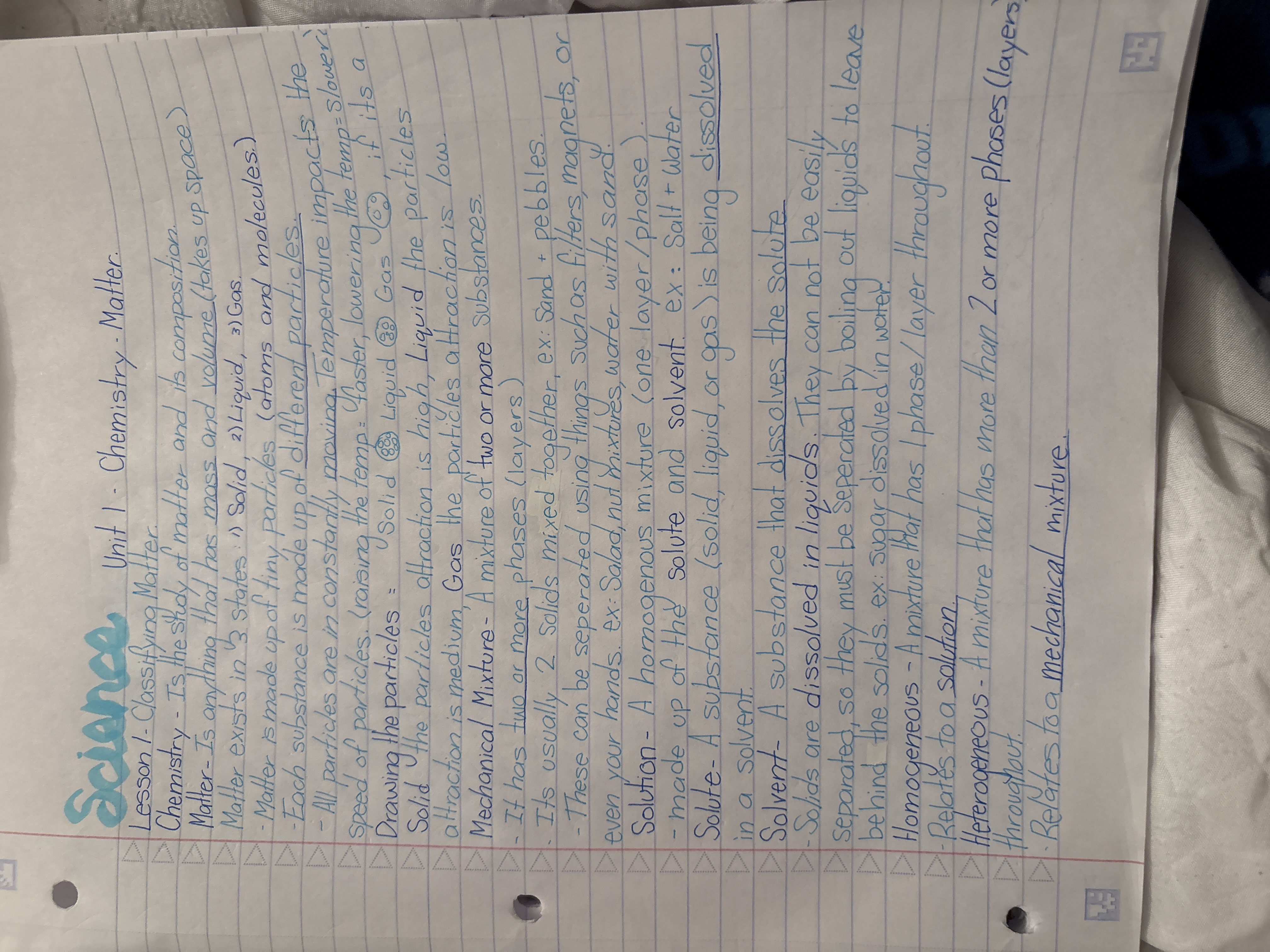What are the states of matter and how can they be classified?

Understand the Problem
The question is summarizing key concepts from a lesson on classifying matter, including definitions and characteristics of solids, liquids, gases, homogeneous and heterogeneous mixtures.
Answer
Main states: solid, liquid, gas; plus plasma. Classified as homogeneous or heterogeneous.
The states of matter include solid, liquid, gas, and additional states like plasma. Solids have tightly packed particles, liquids have more movement, and gases have widely spread particles. Matter can also be classified as homogeneous or heterogeneous mixtures.
Answer for screen readers
The states of matter include solid, liquid, gas, and additional states like plasma. Solids have tightly packed particles, liquids have more movement, and gases have widely spread particles. Matter can also be classified as homogeneous or heterogeneous mixtures.
More Information
Matter is generally observed in solid, liquid, and gas forms, but plasma and states like Bose-Einstein condensates also exist under specific conditions.
Tips
A common mistake is not recognizing plasma as a state of matter. Additionally, it's important to distinguish between homogeneous and heterogeneous mixtures correctly.
Sources
- States of matter: Definition and phases of change | Live Science - livescience.com
- Classification of Matter - Chemistry LibreTexts - chem.libretexts.org
AI-generated content may contain errors. Please verify critical information